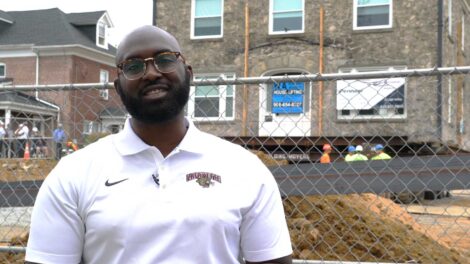Portlock Center Successfully Moved
By Bryan Hay
Lafayette College on Wednesday successfully moved a stone home at 517 Clinton Terrace to its new location a block away, where it will be renovated as the new Portlock Black Cultural Center.
Contractors skilled in house moving began around 9 a.m., inching the 330-ton, three-story house, perched atop steel beams and six sets of hydraulic wheels, across Clinton Terrace and onto the new foundation at 41 McCartney St., at the corner of McCartney and Hart streets.
Other than the sound of auxiliary power equipment, the move itself was almost silent, not even a squeak or pop. When the home reached its new resting place, crews made their final moves during the late afternoon to turn the home half way so its main entrance faced McCartney Street.
“The new Portlock Center symbolizes Lafayette’s commitment to diversity,” said Rob Young ’14, director of intercultural development, who took clear delight in watching the move. “It will be a visible gateway to the campus and, after extensive renovations, will create more space to accommodate current and future programming.”
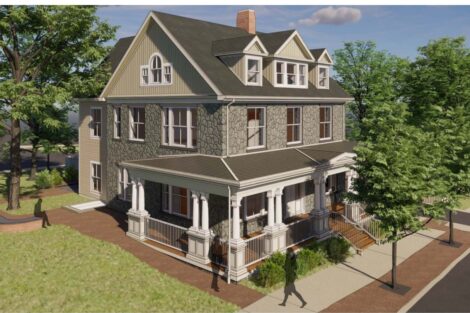
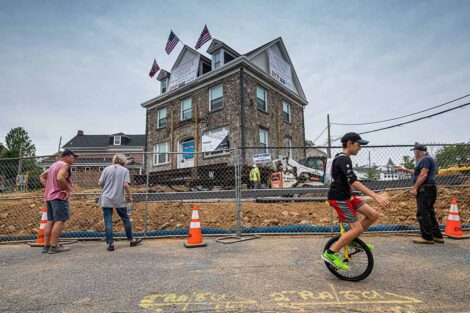
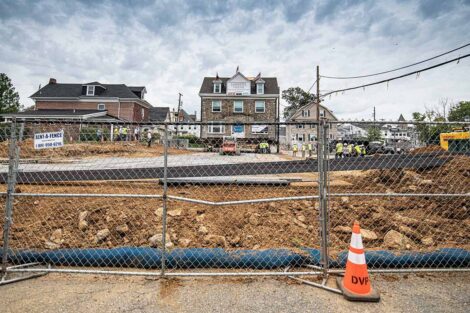
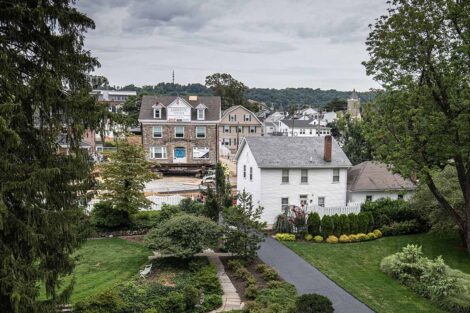
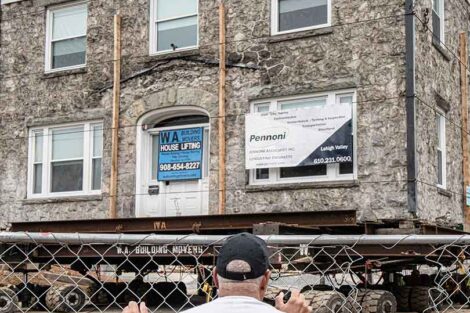
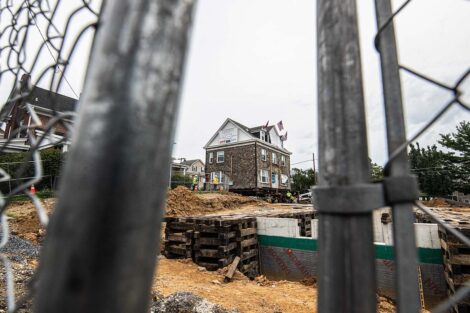
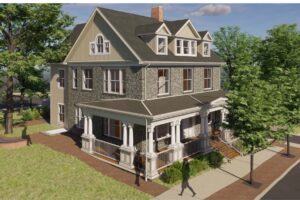
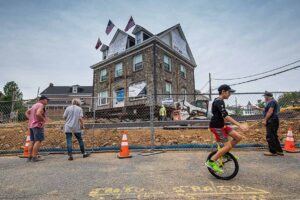
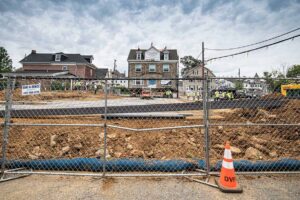
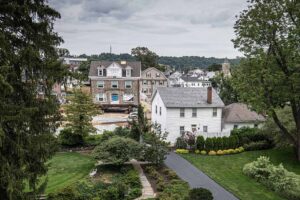
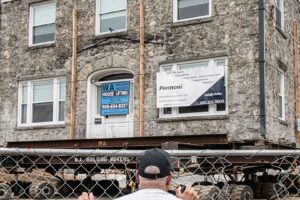
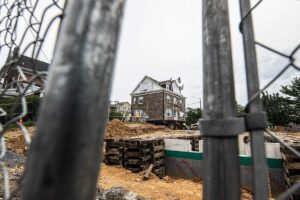
Designed by Easton architect William Marsh Michler, Lafayette Class of 1893, the early 1900s-era house is one of many homes he designed throughout College Hill. One of his first commissions was the reconstruction of Pardee Hall following the second fire there in 1897.
Michler’s 517 Clinton Terrace home will live on as the new Portlock Center, scheduled to open during the spring semester, and continue its mission to serve as a welcoming place for students of all backgrounds who seek dialogue and friendship, Young said.
Planning for the new Portlock Center began in 2017, when then the College engaged students and alumni, who identified several limitations for current and future programming needs with the existing Portlock Center at 101 McCartney St.
Plans for the new center are concurrent with the projected second phase of the College’s McCartney housing project, which required removal of the existing building.
The vacant Clinton Terrace lot created by Wednesday’s house move will first be used for temporary parking when the Markle Parking Deck project begins later this year.
With a full basement, wraparound porch and interior renovations, the new center will host structured and impromptu discussions, including those involving invited speakers, and social gatherings. Building on the history of Black student community and activism embodied in the original Portlock Center, the new center also will include artwork and displays celebrating that history.
The center first opened as the Malcolm X Liberation Center in 1970 on part of the site that is now occupied by Farinon College Center. The center was relocated to its current location, 101 McCartney St., in 1990, and in 1999 it was renamed for David A. Portlock, Lafayette’s assistant dean of academics, who died three years earlier at age 55. Portlock—who first joined the College in 1968 as a part-time consultant to the dean of students before becoming assistant dean of students in 1970 and assistant dean of academics in 1975— played a pivotal role in leading Lafayette toward a more diverse and inclusive future. He helped create several programs at Lafayette, including the Black Cultural Center and the campus’ Association of Black Collegians. He also coordinated the study abroad program and was an adviser to student government.
Creation of the Malcolm X Liberation Center came in response to student demands delivered through a “Black Manifesto” for “a place for black students to socialize, fraternize, and experience community … [and] as a meeting place for both blacks and whites who wish to partake in meaningful dialogue of common concerns and issues.”
Several intercultural student groups— Association of Black Collegians, Hispanic Society of Lafayette, International Students Association, Nia (which means “purpose” in Swahili), and the Lafayette African and Caribbean Students’ Association—now use the center.
“Today’s move honors the legacy of David Portlock and his influential work at Lafayette,” Young added. “It’s a place that generations of students have called home.”
